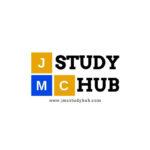Responses of readers to a published advertisement result in
(A) Purchasing power
(B) Preference power
(C) Pulling power
(D) Promotion power
Correct Ans: (C)
Explanation:
Pulling power describes an advertisement’s ability to attract and engage potential customers. It reflects how well an ad influences consumer interest and motivates action, such as inquiries or purchases.
First, pulling power plays a key role in consumer decision-making. When an ad captures attention and resonates with its audience, it increases the likelihood of customer engagement. A compelling message, creative visuals, and persuasive language enhance an ad’s impact.
Additionally, advertisements with strong pulling power generate higher conversion rates. When an ad effectively communicates a product’s value, readers feel encouraged to take action, whether by visiting a store or making a purchase. This process directly influences sales growth.
Moreover, pulling power reflects an ad’s effectiveness in brand recall. If customers remember a brand’s message long after seeing an ad, it means the advertisement successfully connected with its audience. This increases the chances of repeat engagement and brand loyalty.
Furthermore, advertisers use pulling power to measure campaign success. By analyzing responses, brands refine their strategies to improve engagement and sales. Testing different ad formats, headlines, and call-to-action phrases helps optimize marketing efforts.
In conclusion, pulling power is essential in advertising. A well-crafted ad attracts readers, builds interest, and encourages action, leading to higher customer engagement and better business results.














